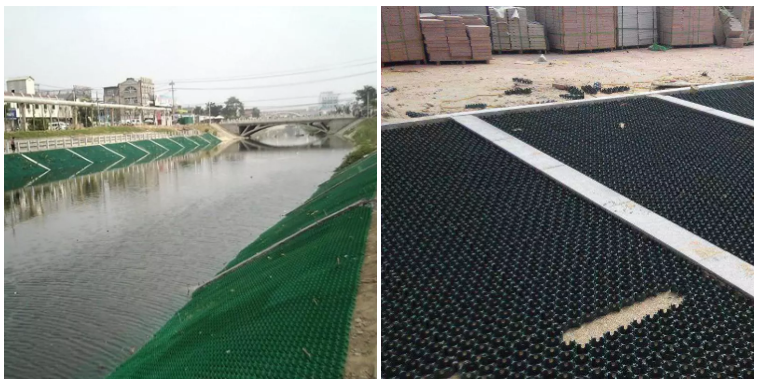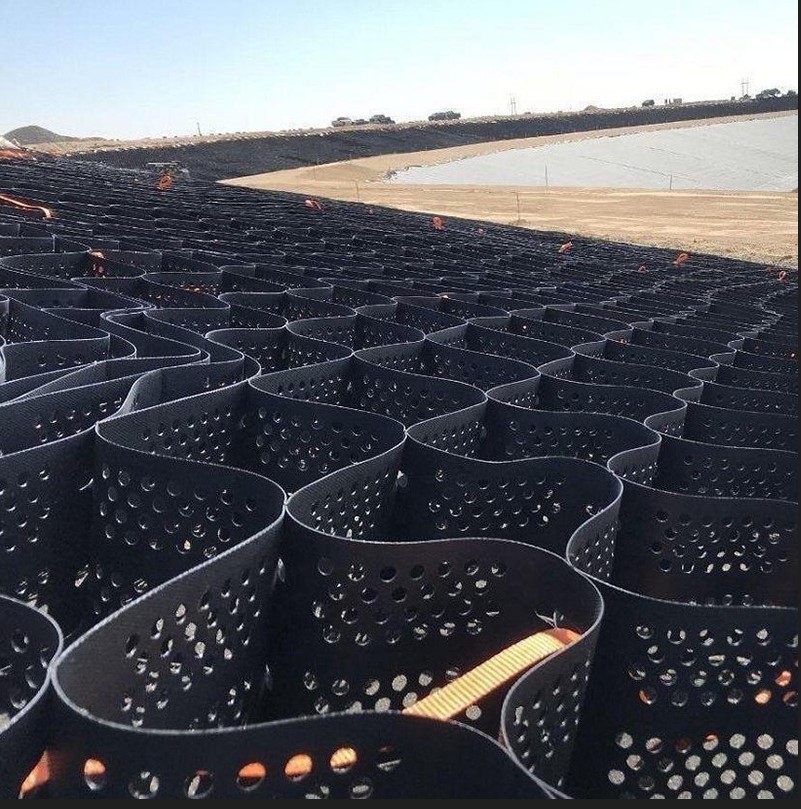Steel-plastic geogrid plays an important role in engineering construction, so what is its main use in engineering construction?
The steel-plastic geogrid adopts: geogrid reinforces the soft foundation, which can quickly increase the bearing capacity of the foundation and control the development of settlement, while the lateral limitation of the subgrade can effectively disperse the load to the wider subbase, thereby reducing the thickness of the base, Reduce engineering cost, shorten construction period and prolong service life.

The role of steel-plastic geogrid
1) Geogrid is used to reinforce asphalt or cement pavement
Geogrid is laid on the bottom of asphalt or cement pavement, which can reduce the rut depth, prolong the fatigue life of the pavement, and reduce the thickness of the asphalt or cement pavement to save costs.
2) For reinforcement of steel-plastic geogrid embankment slope and retaining wall:
Traditional embankments, especially high embankments, are often overfilled, and the edges of the shoulders are not easily compacted, resulting in slope collapse and instability in the later stage. At the same time, gentle slopes are required, and the land occupation is large, and the retaining walls have the same problem. Reinforcing embankment slope or retaining wall with geogrid can reduce the occupied area by half, prolong the service life and reduce the cost by 20-50%.
3) It is used for reinforcement of rivers and sea walls:
It can be made into a gabion and used together with a grid to prevent the dam from collapsing due to seawater erosion. The gabion is permeable, which can slow down the impact of waves, prolong the life of the embankment, save manpower and material resources, and shorten the construction period.
Selection of steel-plastic geogrid filler
Filling should be selected according to design requirements. Practice has proved that it can be used as filler except for frozen soil, marsh soil, domestic garbage, chalk soil and diatomaceous earth. Gravel soil and sandy soil have stable mechanical properties and are less affected by water content, so they should be preferred. The particle size of the filler shall not be greater than 15cm, and the gradation of the filler shall be controlled to ensure the compacted weight.
The steel-plastic geogrid should be laid on a flat and dense site. The principal stress direction (longitudinal) of the installed and laid grid should be perpendicular to the axis of the embankment. The laying should be flat without wrinkles and as tight as possible. Fix with nails and earth-rock pressure.
The main stress direction of the laid grid is the length without joints. The connection between the webs can be manually tied and lapped, and the lap width is not less than 10cm. If the grid is set on more than two layers, there should be staggered seams between each layer. After laying a large area, its flatness should be adjusted as a whole. After filling a layer of soil, before rolling, the grid should be tightened again manually or by machine, and the force should be uniform, so that the grid is in a state of tension and stress in the soil.
Steel-plastic geogrid plays the role of solidification and support in engineering construction. Therefore, when we use it, we must check whether its quality is complete in time.

Application of steel-plastic geogrid:
It can be used for roads, railways, embankments, bridge abutments, construction access roads, wharfs, revetments, flood embankments, dams, tidal flat treatment, freight yards, slag yards, airports, sports fields, environmental protection buildings, soft soil foundation reinforcement, Retaining walls, slope protection and pavement anti-inferior civil engineering. Can also be used for retaining walls, fences
Applicable conditions and functions: Generally, it is used when the filling height of soft foundation treatment is greater than 4 meters. It is used when the subgrade filling height is between 3-4 meters or at the junction of road and bridge to prevent uneven settlement during soft foundation treatment. The old road is widened to prevent longitudinal cracks from being paved at the junction of the old and new roadbeds. Low filling and shallow excavation section, soft foundation treatment with filling soil within 2 meters, subgrade reinforcement and reinforcement of subgrade in bad section to prevent fracture
